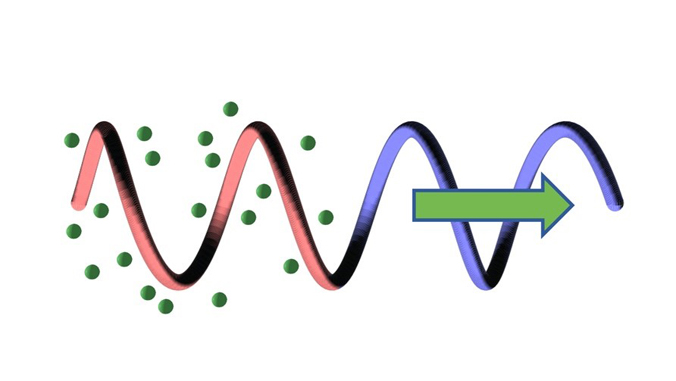
A new method to make microscopic particles move on their own through chemical reactions may have major impacts in various industries, including the healthcare field. The discovery by University of Hawaiʻi at Mānoa researchers was published on October 1 in the Journal of Fluid Mechanics, one of the leading journals in its field.
Led by Department of Mechanical Engineering Assistant Professor William Uspal, the study considers how small particles with a helical (corkscrew-like) shape can harvest chemical energy by catalyzing a chemical reaction and converting this energy into mechanical motion. Significantly, the helical shape means that these particles can continuously rotate. This tendency to rotate could be useful in important applications—such as a tiny drill for micro-surgery in the human body.
Using computer calculations and mathematical analysis, Uspal and PhD student Ruben Poehnl considered how to choose the material composition and geometry of the helices to create or stop different modes of motion. For instance, if there is a catalytic coating on the outward facing surface of the helix, but not the inside, the helix will have a purely sideways motion.
In the process, the researchers developed a new extension of a classical mathematical approach called "slender body theory," or SBT. Uspal and Poehnl found that SBT could not account for the difference in the concentration of the reaction product between the outside and inside of the helix. However, they discovered a mathematical analogy to an area of fluid mechanics called "potential flow," which is most commonly applied to the analysis of aerofoils. This unexpected connection allowed them to calculate the spatial variation (quantity measured at different spatial locations exhibits different values) of the concentration.
"This was very satisfying, since I teach potential flow in our undergraduate fluid mechanics course. The core, textbook ideas that our students are learning in class are finding new applications in current mathematical research," Uspal said.
During the project, Uspal developed a new graduate class, Advanced Transport Phenomena, finding that his research experience with SBT enhanced his teaching of asymptotic analysis—a powerful branch of applied mathematics—to UH graduate students.
Uspal concluded, "I think it goes to show that excellence in teaching and excellence in research go hand-in-hand at an R1 university like ours."
This work is an example of UH Mānoa's goal of Excellence in Research: Advancing the Research and Creative Work Enterprise (PDF), one of four goals identified in the 2015–25 Strategic Plan (PDF), updated in December 2020.






